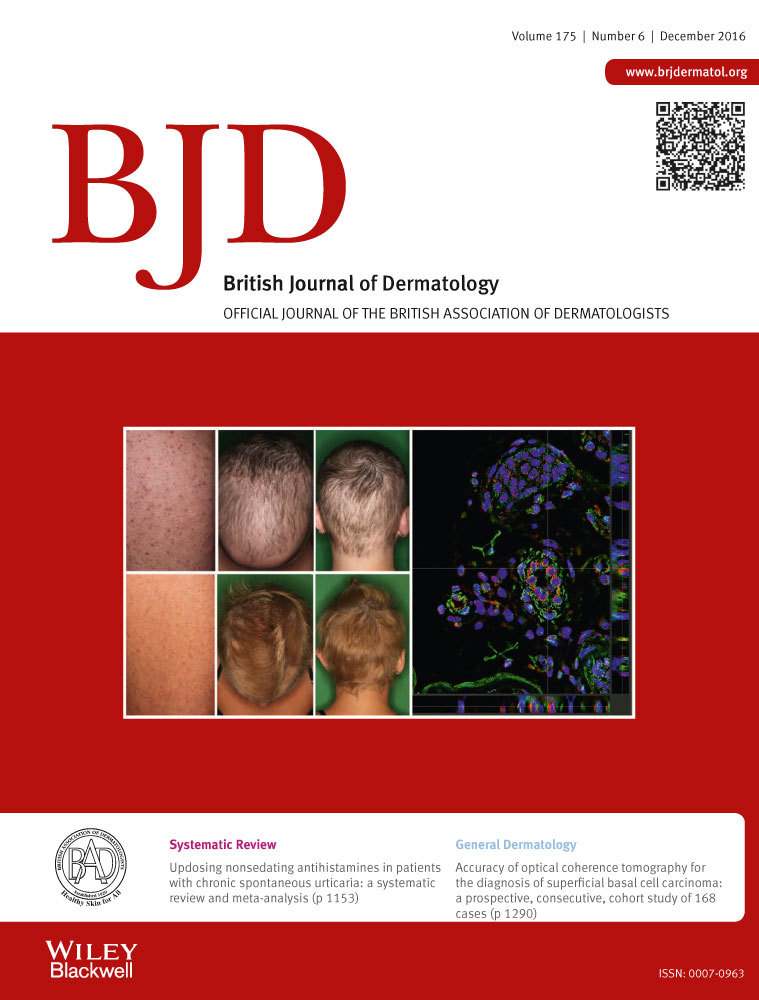Dermoscopy in Europe: coming of age
Pattern analysis dermoscopy is now recognized as an essential tool for the diagnosis of melanoma, as reflected by level IA evidence and its inclusion in melanoma diagnosis guidelines worldwide.1 Dermoscopy is also recognized as a useful tool for nonmelanocytic tumours.2 Indeed, dermoscopy has emerged as an important tool for the examination of patients with skin tumours, helping with earlier diagnosis of skin cancer and reducing unnecessary biopsies of benign tumours. Additionally, dermoscopy is increasingly used in general dermatology.3 However, strong evidence in favour of a diagnostic procedure is not necessarily translated into its universal implementation for patient benefit. In this issue of the BJD, Forsea et al.4 have conducted the largest study evaluating the routine clinical use of dermoscopy, through a web-based survey. Thirty-two countries from across Europe were included, resulting in 7480 responses.4 Previous studies on dermoscopy use in Europe were performed at national level in France5-7 and in the U.K.;8 data on this topic is also available from the U.S.A.9-13 and Australia.14, 15
The major finding is that most (89%) European dermatologists appear to use dermoscopy, in line with previous reports in two European countries.9, 12 Despite the risk of selection bias that is unavoidable for this type of study, this figure is notable, not least because it shows how routine clinical practice in dermatology has changed in a short time. Dermoscopy users were more likely to work in private practice or university hospitals, to see more patients especially for skin cancer, and to receive more training in dermoscopy especially during residency. On the other hand, lack of dermoscopy equipment (57%), especially in public hospitals, and lack of training (42%) were major reasons reported by European dermatologists for not using dermoscopy. Lack of reimbursement (4·1%), lack of usefulness (2·2%) and time consumption (1·1%) played a minor role for dermatologists not using dermoscopy. Previous studies have shown the average time needed for dermoscopic examination of a lesion by an experienced user to be less than 1 min in current practice,5 and less than 3 min for a complete skin examination.16 Studies on cost efficiency of dermoscopy are lacking. However, cost is a weak argument for not using dermoscopy; handheld dermatoscopes are now inexpensive and can be used to examine large numbers of patients. This study also confirms the major role of training in dermoscopy,5, 7, 11, 12 and highlights the importance of this training taking place during residency. The proportion of dermoscopy users who had received training during residency was 3·5-fold higher than in nonusers. However, no more than 40% of dermatologists had received any dermoscopic training during residency. A survey in the U.K. reported that 36% of U.K. trainees receive dermoscopy training ‘on the job’,8 while some surveys conducted in North America showed low satisfaction levels among dermatology residents with respect to dermoscopy teaching.17, 18 The development of e-learning in dermoscopy is sure to facilitate training of both residents and graduated dermatologists, compared with previous generations.
Dermoscopy users were further categorized as low users (~ 1/3) and high users (~ 2/3). High users were associated with using online training, owning more sophisticated equipment (digital videodermoscopy), using more advanced diagnosis algorithms (pattern analysis) and being confident for more difficult tumours (including nonpigmented tumours). The level of self-confidence was low for inflammatory skin lesions, irrespective of the degree of dermoscopy usage. The next step in the universal implementation of this tool will be wider usage in primary care. Some studies have proven the positive impact of dermoscopy in skin cancer screening, and triage in teledermatology.19, 20 If dermoscopy is to be used more widely in primary care, teaching will again be a challenge.7 Nevertheless, experience in teaching GPs and medical students in dermoscopy has helped to improve the detection of suspicious skin tumours.19, 21
In conclusion, Forsea et al.4 have revealed that dermoscopy is now widely used by European dermatologists as a clinical tool for their daily practice in the diagnosis of skin tumours. This important study captures a significant shift in the practice of dermatology over a period of just a few years and highlights the need to further develop the teaching of dermoscopy for residency programmes and postgraduate courses across Europe.
Conflicts of interest
None to declare.




